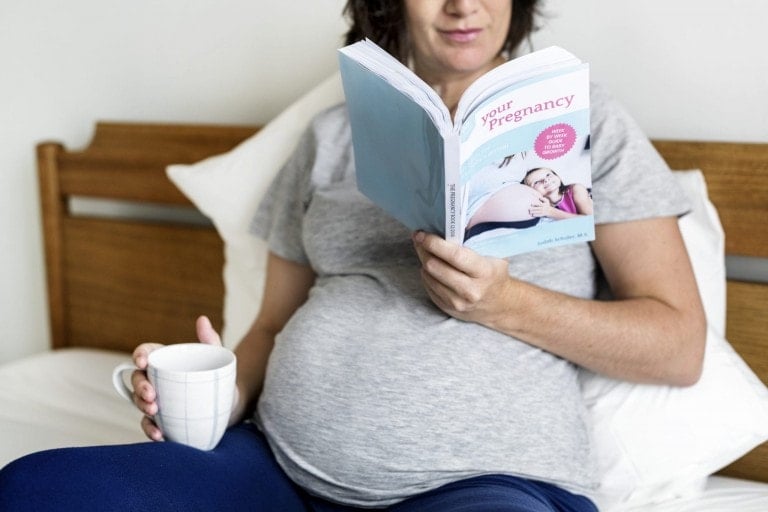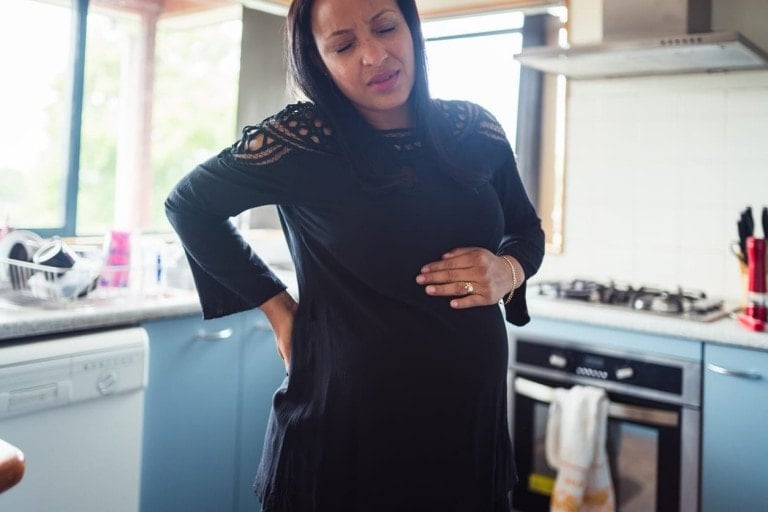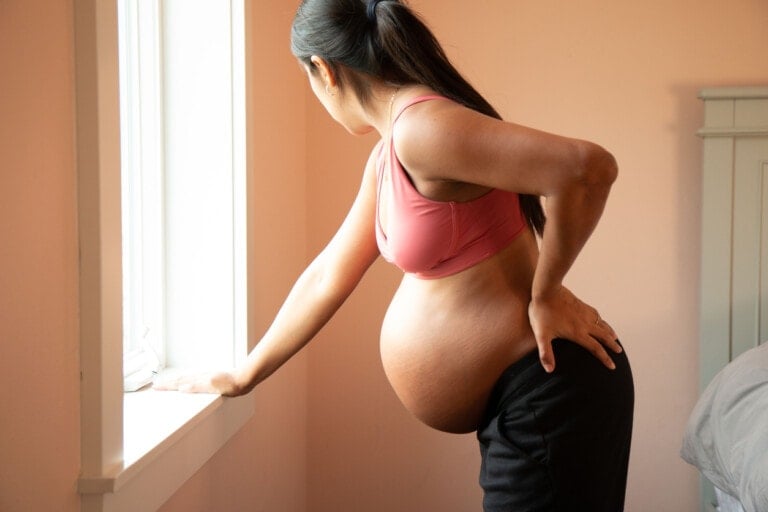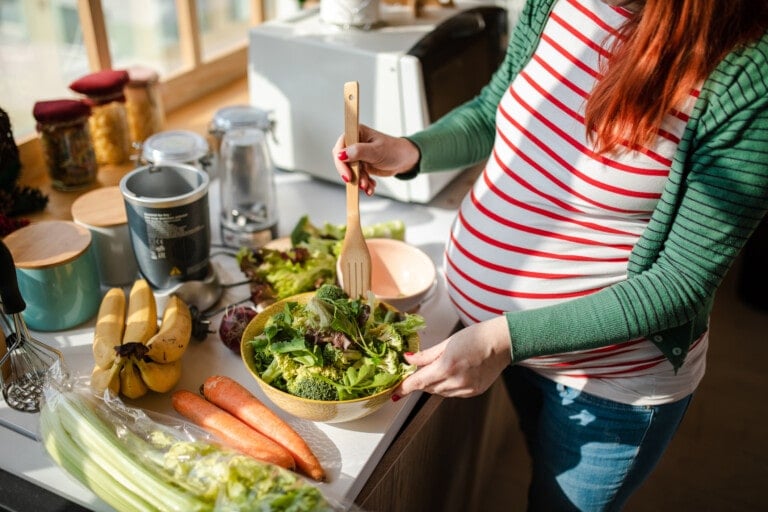When I was pregnant with my oldest, my daughter would start kicking anytime I turned on upbeat music (often driving home from work). I’d break into a big smile and shimmy along with her at the next red light. It’s no surprise that now, at almost five years of age, dance and music are two of her favorite things!
Of course, my daughter’s pronounced fetal movements mainly happened at the end of my second trimester and into my third trimester. For first-time pregnant moms, fetal movements generally can be felt around 16-22 weeks of pregnancy, during the second trimester.1 According to the American Pregnancy Association, there is a broad range of when those first movements from baby can be felt, ranging from 13-25 weeks.2
The Quickening
The first stirrings you’ll feel inside the womb are called “quickening.” Biologically, this alerts mom that there is indeed a baby growing inside! Healthcare providers recommend that pregnant women self-monitor their fetal movements, especially during the third trimester or around 28 weeks gestation and for the rest of the pregnancy.1 In addition to being checked by your healthcare practitioner, moms can conduct a fetal movement count (FMC) or a “kick count” independently.
Northwestern Medicine Women’s Health recommends women “count to ten” or feel for ten baby movements within an hour, preferably at the same time each day.3 According to the American College of Obstetricians and Gynecologists, this can be kicks, flutters, swishes, or rolls.4 Any little movement counts. Count the Kicks (here) is a great app to use that helps you track these movements. If you do not feel ten movements within an hour, lay down on your left side, have a snack or fruit juice, and continue counting. If less than ten movements are experienced in a 2-hour window, contact your clinician and let them know. Or go to the hospital for an evaluation.
Every baby’s normal activity varies, so the ten movements could be less than an hour or a little more for your little one. This is why it’s essential to understand your baby’s normal movements and speak up if you notice a decrease. Fetal monitoring is important because it may help reduce stillbirth and improve maternal-child bonding during pregnancy.5,6 It is even more vital to count your baby’s movements several times a day as you get closer to your baby’s due date.
*Note: Pregnant women are routinely asked about fetal movements at their doctor or midwife appointments because it is well-established that the perception of decreased fetal movements (DFM) is associated with stillbirth.7 Should you notice decreased fetal movements or feel that something is off, please contact your care provider and go in for further evaluation and monitoring.
How to Get Your Baby to Move During Pregnancy
Feeling your little one move inside of you is a beautiful bonding experience. So, how can you encourage that bonding and get your baby to kick and wiggle? Read below to learn how to get your baby to move during pregnancy!
Play Music
Making noise or playing music is a great way to connect with—and elicit a response from—your baby in the womb. Singing, talking, or playing an instrument for your baby can prompt her to move about. A lively television show or conversation with your partner may also make her kick! At around 18 weeks, babies can start to hear sounds.8
Eat a Snack
One of the easiest ways to inspire your baby to dance and wiggle is to eat a bite of food. The rise in blood sugar encourages them to move. Try a banana, cookie, piece of cheese, or handful of berries.
Drink Cold Juice
The sugars naturally occurring in one cup of orange juice will boost your baby’s movements (and energize you!). Plus, Vitamin C is an excellent antioxidant for your body! Don’t overdo the sugar in your diet, as too much sugar is problematic for gestational diabetes.
Drink (A Little) Caffeine
Caffeine is a stimulant that increases your blood pressure and heart rate, so caffeine should be consumed minimally and carefully. The American College of Obstetricians and Gynecologists recommends that pregnant women consume no more than 200 mg of caffeine daily.
Jump and Jog in Place
Jump up and down, perform a couple of jumping jacks, or jog in place for about 30 seconds, then rest. Repeat a few more times until you feel your heart rate increasing. Then take a sip of water and walk slowly. You may feel your baby moving after the jumping due to your large movements and increased pulse. Walking slowly afterward gently brings your heart rate back down.
Lie Down and Rest
Some expectant moms report that their baby becomes most active at night—right when they’re trying to fall asleep! If it’s daytime, try lying on your couch or bed for a nap. Sometimes changing position or rolling from right to left can stimulate your baby and cause them to shift position, too.
Gentle Poking
Feel free to gently press or nudge him back if you feel the baby’s elbow or foot pressing against your abdominal wall. You may want to add a few cooing noises or kind words, as hearing your voice and feeling your touch can rally your little one to poke you back!
Shine a Flashlight
Do you wake up and stretch in the morning when the sun hits your face or your partner turns on the overhead light? Your little one may also be able to sense and respond to light versus dark during her second trimester. Try shining a flashlight on top of your tummy and see if your baby responds with a movement or a kick!
Every baby has a different personality and will grow at its own pace. Likewise, the rate at which they start moving around may vary from pregnancy to pregnancy. Notice your baby’s regular movement style, and use that as your baseline. Talk to your clinician about any questions or concerns you may have, and in the meantime, turn up your favorite song and have fun dancing with your little one while he’s still inside your tummy!
































